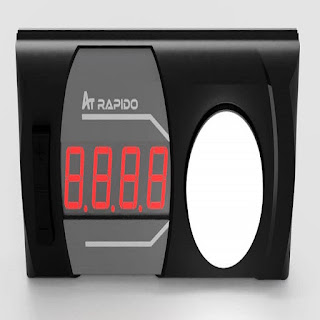Different Types of order picking in warehouse
Order picking in a
warehouse involves finding and extracting the specified amount of right
SKU necessary to fulfill an order. It is one of the most expensive and
labor-intensive processes, according to a report, order picking takes 70% of
the time, 60% of all warehouse activity and 55% of operational costs. With the
evolution of eCommerce and omnichannel distribution strategies, more and more
methods of order picking are being deployed to achieve order fulfillment goals.
Order fulfillment involves a whole range of activities from
customers placing orders until the time they shipped out of the warehouse,
including order picking, packing, shipping, and scheduling, etc. Quite often order fulfillment is used
interchangeably with order replenishment but they differ as a whole. Because
replenishment is a limited activity of the order fulfillment process, which
involves moving items from storage locations to forward picking locations; it
also denotes refilling the most used items of the warehouse to a pre-decided
optimal quantity, that is getting it sourced from vendors. So, essentially
order fulfillment deals with customers, whereas replenishment is either an
inside activity or deals with vendors & picking is an activity that happens
on both of them.
In this blog, let’s take a sneak-peek into some of the most
popular order picking methods, which are differentiated mostly on the basis of
the inventory and the order profile characteristics.
1. Discrete Picking or Single order Picking: Where in a
picker will fulfill each order one at a time. Picker will take the picklist and
a picking cart/crate/box and goes to the specified location to perform picking
operation for an order. This is a basic way of doing picking & is not very effective
as it involves a great amount of travel time.
This picking method is appropriate for some industries, or
for orders of odd-size and oversized products that require special handling.
2. Cluster Picking: Cluster picking involves grouping of
multiple orders into one unit and processing them simultaneously. Cluster
picking is majorly location-driven where in SKUs for multiple orders would be
picked from one particular location. Picker usually carries a picking cart that
accommodates multiple totes/crates each one signifying a specific order.
Depending on average picks per order it can vary from 4 to 12 totes with
multi-tier cart. This is also called ‘Pick to Cart’ picking.
As far as efficiency in picking is concerned, cluster
picking is a very efficient way of doing the picking, as only a single picker
is involved in the process of picking several orders at the same time from
different SKUs.
3. Batch Picking: Batch picking is an order picking protocol
that calls for the picker to compile a batch of the orders by picking from a
single SKU or one SKU at a time. It helps to fulfill the order very fast by
picking multiple orders at the same time. Single picker picks a batch of
orders, which helps reduce repeated trips to the same location, essentially one
location is visited only once by a picker.
Batch picking is preferred when the orders have fewer than 4
SKUs and each item is small. One order picking window per shift will be
sufficient in case of batch picking.
4. Zone Picking: In zone picking, the entire picking area is
divided into different zones and each picker is assigned to a particular zone.
So, the pickers perform order picking on multiple orders within their zone.
Typically, the order crate will pass from zone to zone on a conveyor belt and
traverse all the zones before the order gets completed. It is also called the
‘Pick and Pass’ method of order fulfillment.
Zone picking is particularly helpful in large warehouses
with a high number of SKUs wherein the warehouse is categorized into zones on
the basis of different criteria such as fast-moving SKUs, slow-moving SKUs or
high-security SKUs.. etc. It also helps the picker to gain deep familiarity
with their respective zones and the SKUs stored there, which accentuates the
picking speed and minimize picking errors. A disadvantage of this method is the
scheduling of orders as per shift, in case if some order misses the schedule,
then it will be fulfilled only in the next shift.
5. Wave Picking: Grouping of orders into waves is the first
step in wave picking, it can be done on a small number of orders like 4 or 5 or
on a large number of orders, like hundreds, depending on the order volume &
the shipping routes/schedules. The order picker moves to collect the products
necessary for several orders in one go and bring them to a staging area where
sortation of them into individual orders will happen. Wave picking requires
multiple waves to be run in a single shift.
Wave picking is widespread in clothing cataloguers and other
catalog and e-commerce operations where there is both a large number of SKUs
and a large percentage of them that might appear to be similar. This method is
known for being highly efficient and accurate if it is set up correctly. It can
also help increase accuracy if a 2-level check can be implemented, one at the
point of first wave pick & the other while sorting them to fulfill
individual orders.
So, considering the nature & size of the SKUs, order
profile characteristics, resource constraints, facility size, etc, warehouse
picking strategy will be decided and all the warehouse picking strategies have
to be in unison to fulfill the customer demands of accurate & timely
dispatch of the orders
For More Information:

Comments
Post a Comment